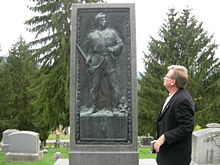Why make an authentic Lancaster County Pennsylvania Rifle from a kit? The word Kit, some would infer, that it is a cheap knock off, and easy to put together. Nothing could be further from the truth as it pertains to authentic Pennsylvania Flintlock Rifles. Today’s kits are made of the finest woods, finest barrels and as accurate as all get out! Really!! To my eye, the Lancaster County Rifles from original makers such as Jacob Dickert and Isaac Haines among others are a thing of functional beauty. I built my rifle from a Jim Chambers Ltd Lancaster Rifle Kit with Tiger Maple stock, Siler Lock, 44 inch Rice Swamp Barrel. The kit looks like this… Granted the stock looks like it is ready for parts to be dropped in but its not. The stock is roughed out and the brass is sand cast with cast marks. Every part must be inlayed or chiseled into the stock.
A good kit will cost only around $1000 dollars like mine. But you will need an array of hand tools and carving chisels and sand paper that can run in $200 dollars or so. I know that is a lot of money but they don’t come cheap.
Below is the Jim Chambers Lancaster Kit I used for my build.

I am a student of history, In particular the American Revolution and the Pennsylvania Rifle was a key part of winning the Revolution because it had a rifled barrel and longer range. The Pennsylvania rifle, some know as the Kentucky Rifle was not as easy to load as the smooth bore Brown Bess musket (or French made Charleville). Bess had accuracy good to 50 yards but not much more. The Pennsylvania rifle earned its keep on the frontier for accurately dispatching wild game and as a sniper rifle at long distances to 200 or more yards in the hands of a Marksman.
Men like General Daniel Morgan and Morgan’s Rifleman were hired for their skill as woodsman and crack shots at long ranges. One such hero under Morgan was Tim Murphy who during the battle of Saratoga took out a horse riding British General beyond 200 yards, some say 300 yards.
The patch box on the stock was often made of wood however upscale Lancaster Pennsylvania models were lavishly embellished with brass and often a signature of its maker. My patch box below.

But if you want to purchase an authentic Pennsylvania rifle (not the kit) the cost can be significant. Often prices are in the $3000 to $5000 range. The art work is spectacular! See the brass patch-box below from this John Bivins Style Flintlock. http://www.custommuzzleloaders.com/bivins.html
I think the hardest part of making a Pennsylvania Flintlock rifle given that the barrel and lock is roughed-in already , is carving the stock and in-letting the barrel into the stock. Today’s kits have roughed-in the stock too so that this major hurdle is lessened to a great degree. If you are not good with your hands though, I do not recommend building from a kit. Trust me, it is not easy and it is fraught with danger of major errors using chisels to inlet the stock for barrel and trigger assembly. But if you are good with your hands,then this rifle can be your signature work to pass on.
My Jacob Dickert brass patchbox below was purchased with the daisy elsewhere. I spent hours just to cut, drill and chisel to inlay the patchbox flush with the wood, create the spring door lid.
I liked my finish inlay work so much that I hired a master engraver to copy Dickert’s design seen far below for the box and lock side plate. 

Below is my first ever novice attempt at carving a double Rococo C scroll as Dickert would have done, before staining. I was very happy with it!

Below is the Dickert Floral I also carved at the Tang.

Watch the Sparks Fly from this Flintlock below. My slow motion clip displays the spark power to ignite the charge in the pan.
To make your build easier, better kits come with a DVD and take you step by step though the process. I needed the DVD, It was excellent.
Well, 3 years ago the Lancaster Kit below with tiger maple cost 950.00 The master engraving on the box and side plate cost me $300 more.
It took me more than 100 hours to carve, cut, and fit and stain, perhaps nearer to 150 hours. Thank God it shoots really well after all that effort!
Yesterday I took my rifle to the range and shot close range, to 25 yards. It was fun. See below. Shot number 1 Upper Hit clipped the dead center box. Shot number 2 lower right was nearly in the same spot. Shot number 3 was a off to the right a bit but I think that was me and not the rifle. I use 70 grains FFG powder and there is very little recoil. I was very pleased with the accuracy check. Good for hunting squirrels, rabbits and hares!

My Jacob Dickert Lancaster Pennsylvania Flintlock shoots flat to 75 yards and drops a few inches at 100 yards and 16 inches at 150 yards with 90 grains of FFG powder. For deer, I will stay within the 75 yards.
Good Hunting!
© Copyright 2020 All Rights Reserved.















